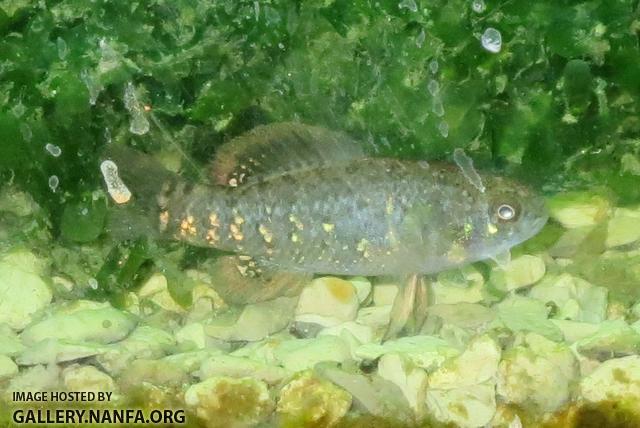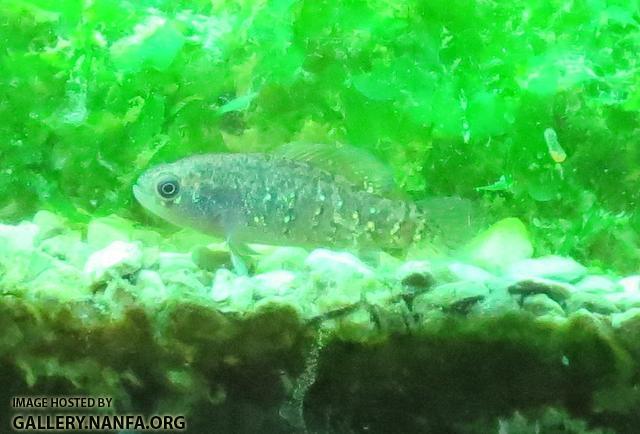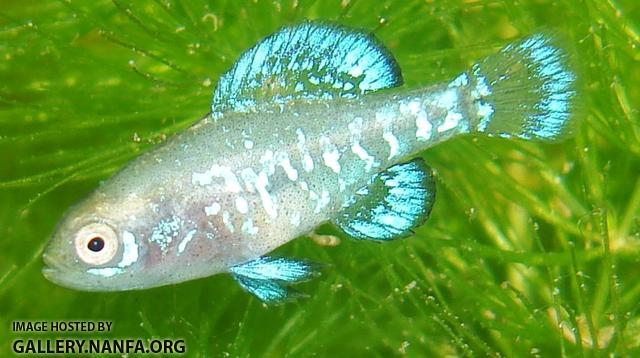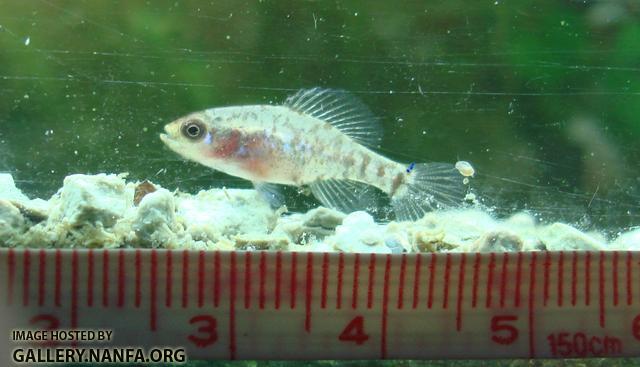While it doesn't appear that the NANFA forum is a good 'fit' for me, I don't like to leave things I start unfinished. Given that, and in the context of this thread, I am providing some images and data to illustrate the use of TNT and how I think it might have been of some use to the members of NANFA.
In January of this year I received some juvenile fish from a NANFA member. (I have not requested permission from them to publish their name, so I won't. They may, after reading this thread, choose to make their contribution public.) I ordered 3 pairs of young-of-the-year fish: Two each of Redbreasted (
Lepomis auritus), pumpkinseed (
L. gibbosus), and dollar (
L. marginatus). At the time of receipt, they were all between 30 and 40 mm long. I photographed three of them, but due to the stress of shipment I decided to put off further photography until they had demonstrated willingness to eat and had a chance to acclimate to their new environment. On January 31 - approximately 15 days after receipt - I performed a water change and chose that time to acquire the first TNT-appropriate pictures. Here are some representatives of those first pictures, with the TNT annotations.
The first image is of a fish with each point of morphometric interest (17 of them) as well as four lines, in this case the longest soft rays of the dorsal, anal, pelvic and pectoral fins.
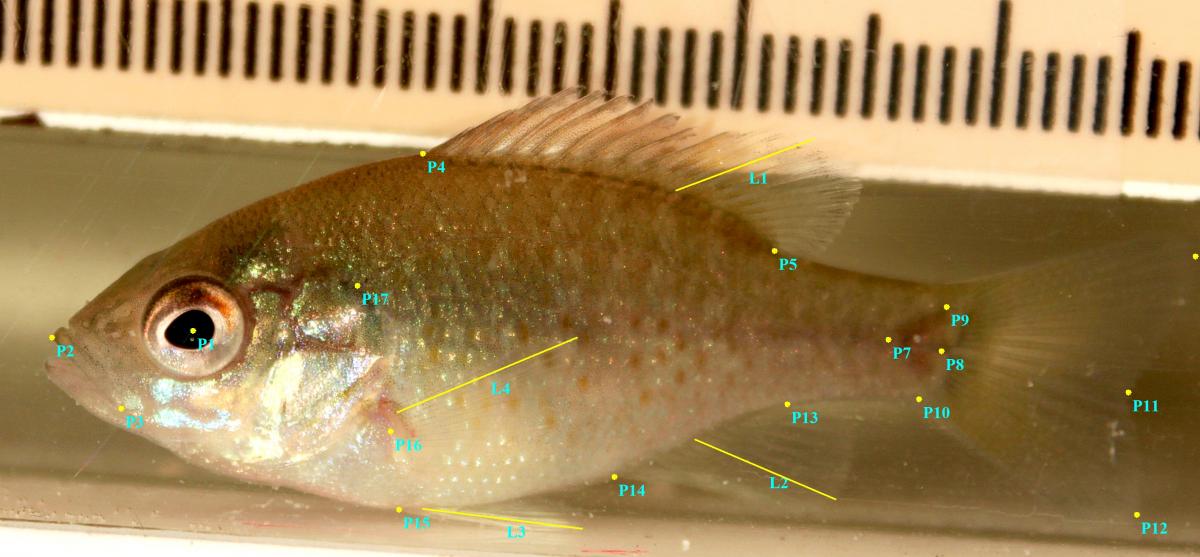
The second image is a table of the extracted data from each point and the lengths of the lines.
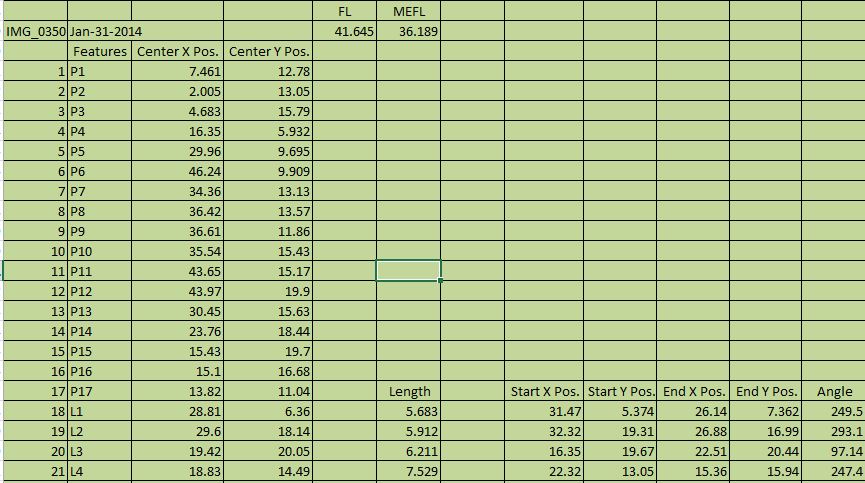
The third image is of the same fish at the next water change two weeks later, and it's associated data table.
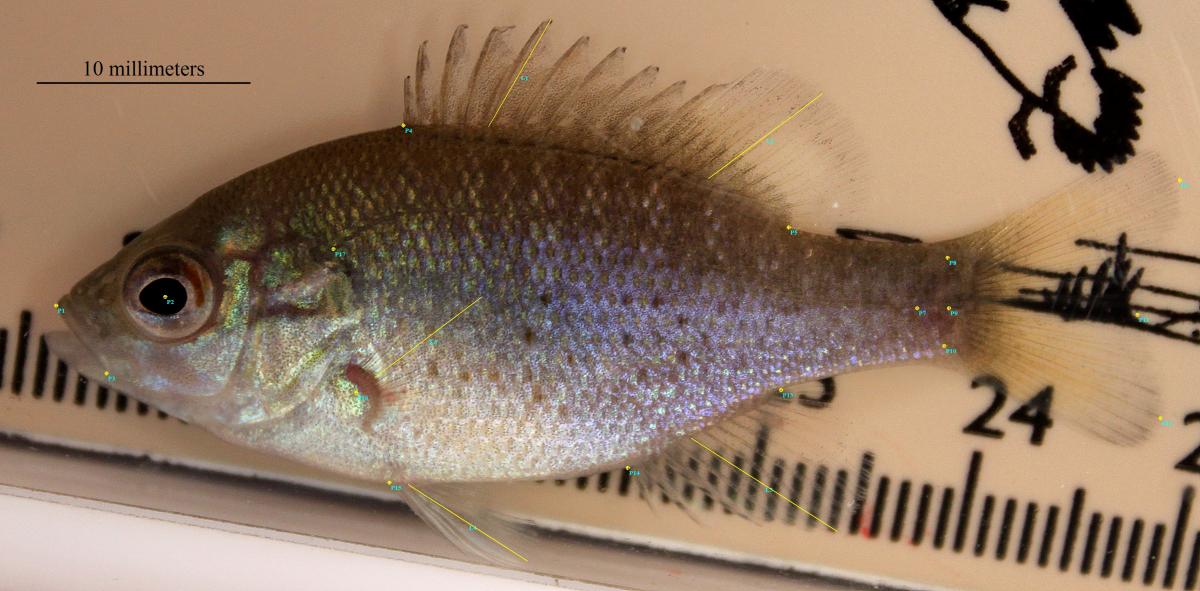

You will note a couple of changes in the data. I have included the length of the longest spine in the dorsal fin, and rearranged two of the morphometric point
numbers. I have also registered the rest of the image to point #1. This facilitates post acquisition computation and data processing. Modifications such as this are often the case when starting a new species or project. It may take three or four iterations to determine the best format of data to collect.
While this is just one side of one of the six fish, all fish were photographed on both sides, and data recorded for image acquired. Subsequent to the February 15 photo session, I was able to look at - among other things - growth and growth rate for each fish. The next two images are the table of that data and the graphic representation of that data.
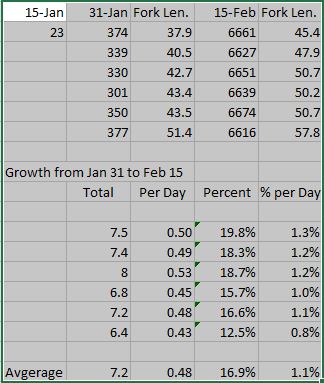
(Within fish side-to-side length measurements are all within 0.5mm.)
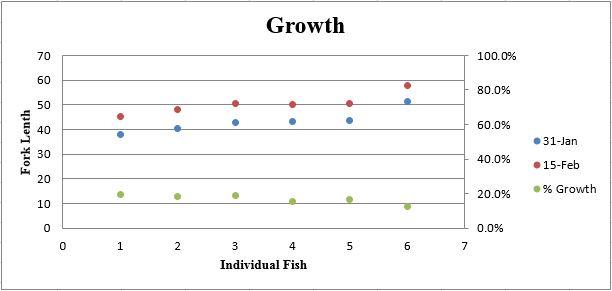
The fish were kept at a temperature of 23C, plus or minus 1C, and fed twice daily to satiation. The average growth for the 15-day interval was 7.2mm and the average per day growth was 0.48mm.
This is just a "quick and dirty" illustration of the potential uses of TNT. It could be as scientifically rigorous or lax as one desires. My thought for its most valuable use to NANFA would have been to "tag" all of the fish in a given body of water that is "regularly" sampled by a member, or by those collectively and systematically sampling a specific body of water. In a relatively short interval of time, one would "know" essentially all of the fish in the body of water, and any new fish captured would most likely be recruits. Clearly, growth rates could be recorded not only for individuals but also for populations, and comparisons made not just between populations, but also within populations after a stressor event or after some "restoration" effort. Morphometric variances between populations, genders, breeding condition, etc are trivially quantified. Add to the metadata gps information and some very interesting analysis could be undertaken.
NANFA has "at its disposal" a small army of interested individuals that, collectively, could assemble an unprecedented database of rigorously quantified data. The ONLY requirement being to take pictures of the fish 'you' already have in your hands. Speaking of "in hand", watching these fish of mine from "day one" will allow provide information on these three species that will allow identification of species at an earlier age than is currently possible. For those raising fish, starting the process as early as possible in the life history would allow the compilation of a "key" that would facilitate very early life history identification of wild fish. When people work toward their own interests, but share data, the potential is almost limitless.
So... for those individuals that would like to set up FREE accounts to start collecting and maintaining data on your captive fish as well as wild fish you may sample, send me a PM and I will set up a FREE account for you at Biopar. For those of you that continue believe that this is some sort of business effort on my part, the nicest thing I can say to you is that we are usually our own worst punishment.
Paul


 This topic is locked
This topic is locked







